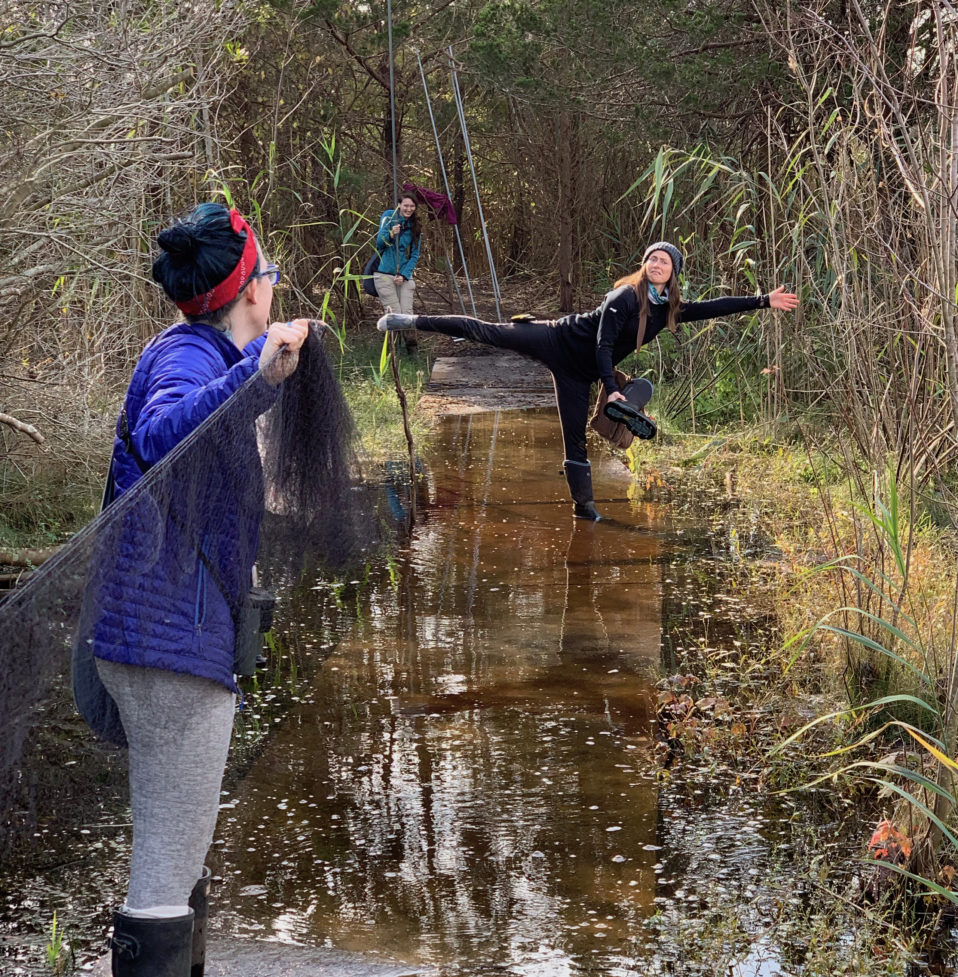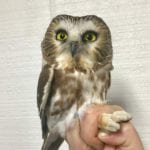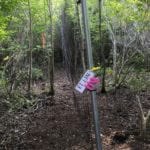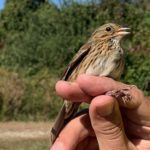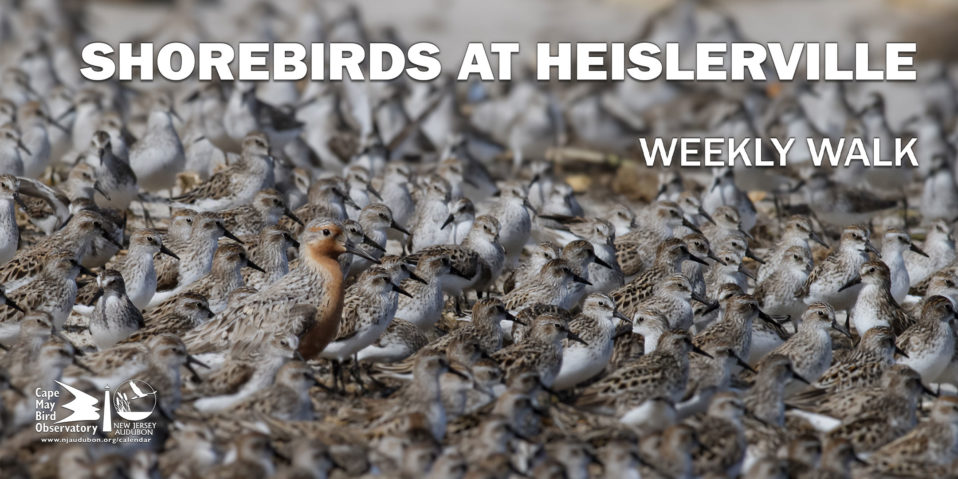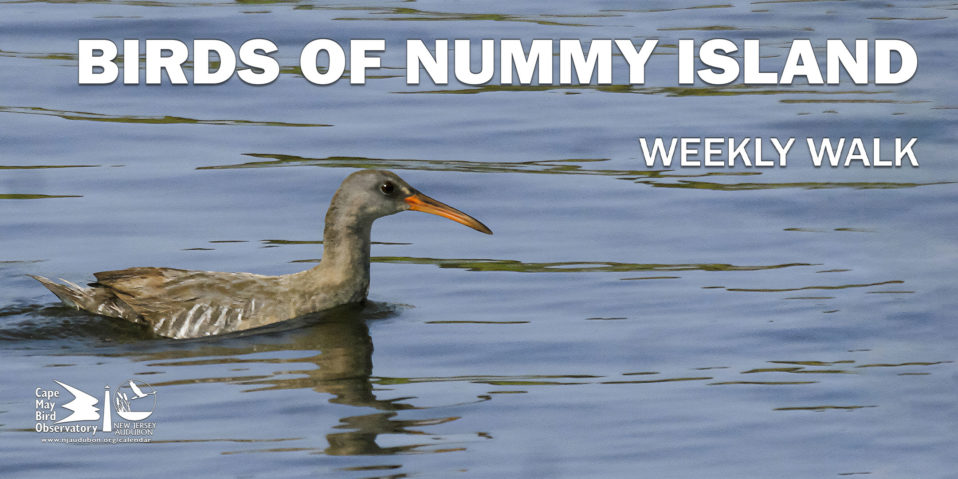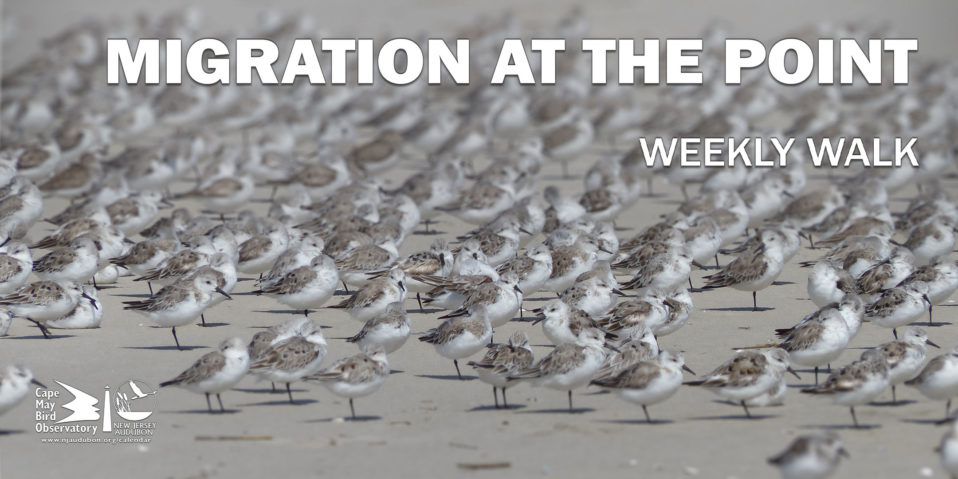Above: Breaking down the station requires attention to detail and a healthy dose of impromptu yoga…
By Laura-Marie Koitsch, 2018 Bander In Charge
No, dear reader, you weren’t imagining things, our previous post did indeed say that week thirteen was our final week of banding. And, yet here we are again bringing you updates on week fourteen of our inaugural season of banding here in Cape May. We originally thought last week would be our final week but, looking at the weather forecast, we decided that we might be able to squeeze in a few more days of banding this season. Plus, we were still seeing some migrants move into the area. As this is our inaugural season, it is a bit difficult to know around which date we should stop our “fall” monitoring and move into our “winter” monitoring (remember we hope to someday soon have year-round monitoring). Regardless of the reasons, we were all excited to see what week fourteen would bring.
There was no banding on November 15thor 16thdue to high winds. We opened our nets on the 17thand were able to band 19 birds of 10 species. Most of the species were late season migrants such as Golden-crowned Kinglets and Orange-crowned Warblers. We also banded a Tufted Titmouse, only our third of the season. Highlights included a small (but, very vocal!) flock of Rusty Blackbirds (RUBL) in the tree above one of our nets. We spent several net rounds asking them nicely if they would like to come down just a wee bit closer so that we might admire them better. Come on, species #101! But, alas, it was not to be. It comes as no surprise to find them near some of our nets as they prefer flooded woods and marshes during migration and well, that’s roughly 80% of our net lanes right now. For those of you who may be unaware, the Rusty Blackbird is one of North America’s most rapidly declining species, with an estimated 85-99 percent population plunge over the past forty years. So, besides the fact that they are an absolute stunner of a bird, we would also like to band some in the hopes that the data we collected could possibly aid researchers studying the still undetermined cause(s) of RUBL decline.
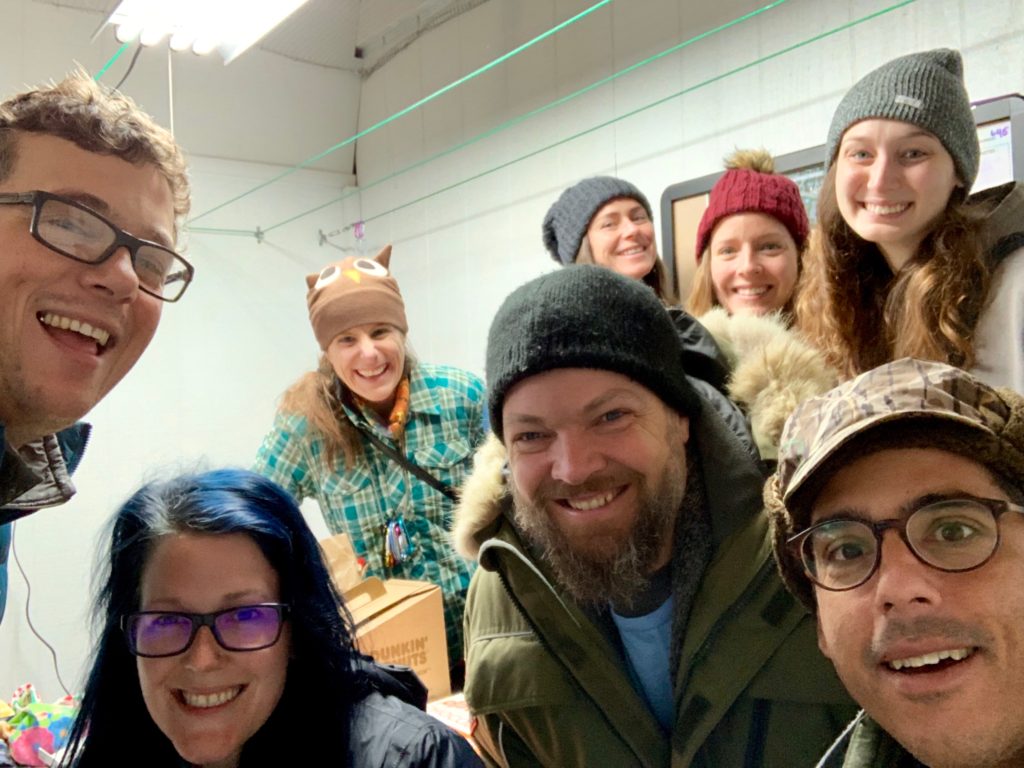
A quick selfie of the last-day crew; a subset of the dozens of wonderful volunteers who helped make the first season a roaring success!
November 18th, 2018 was officially the last day of our inaugural banding season here in Cape May. We had a great crew with us & the CMBO Migration Count Coordinator stopped by to drop off donuts and coffee as a thank-you to everyone’s hard work this season. We were able to open all seventeen nets a half-hour before sunrise for the standard 6 hours of operation one last time. We banded 18 birds across 10 species. And we caught what some might argue was the most exciting bird of the season, species #101, a Wilson’s Snipe! I can’t begin to express my own personal delight at finally having a snipe in the hand! Having worked with shorebirds in several countries on multiple continents now, I was beginning to suspect that the prospect of ever banding a snipe resembled the “snipe hunts” of my childhood. Although Wilson’s Snipe is a legally hunted species in much of the US, the snipe hunt to which I am referring is the prank of the same name often played on unsuspecting parties at summer camps across the country. It involves convincing someone to stand out in the marsh in the middle of the night holding a bag with the hopes that if they stand real still, they’ll catch a snipe. Because of this well-known prank, many adults (I’ve met more than a few!) don’t believe that snipes are real. Not only are they real but, they’re absolutely wonderful! They have incredibly long bills with a soft flexible tip that can grab food from deep within the mud whilst the rest of their bill remains closed. Their eyes are set so far back on their head that they can see almost as well behind them as in front of them or to their sides. And because their pectoral muscle makes up roughly ¼ their body weight (the highest of all shorebirds), these wonderful birds can reach speeds of up to 60mph! So, the next time someone suggests standing in a marsh to “catch” a snipe in the summer, you should suggest going out to watch their amazing high-speed (25mph+!) aerial winnowing displays instead. What an incredible species with which to end an incredible season!
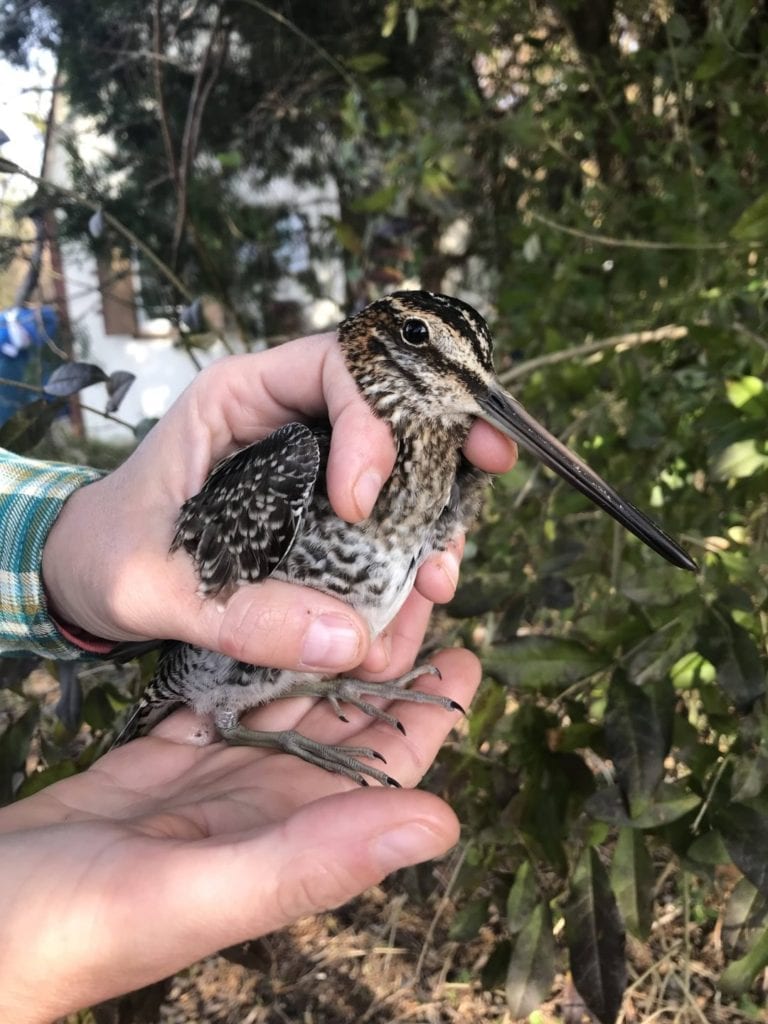
We sadly spent the rest of week fourteen dismantling and cleaning the banding station. Although we are all sad to see such an amazing season come to an end, there were still plenty of laughs and smiles as we reminisced about our favorite memories this past season. Overall for the week, we banded 37 new birds across 17 species. We operated our nets on two days for a total of 206.5 mist net hours (mnh). We recaptured 4 previously banded individuals across 3 species. And we said good-bye to all our friends, both feathered & non-feathered alike, that made our first banding season so special.
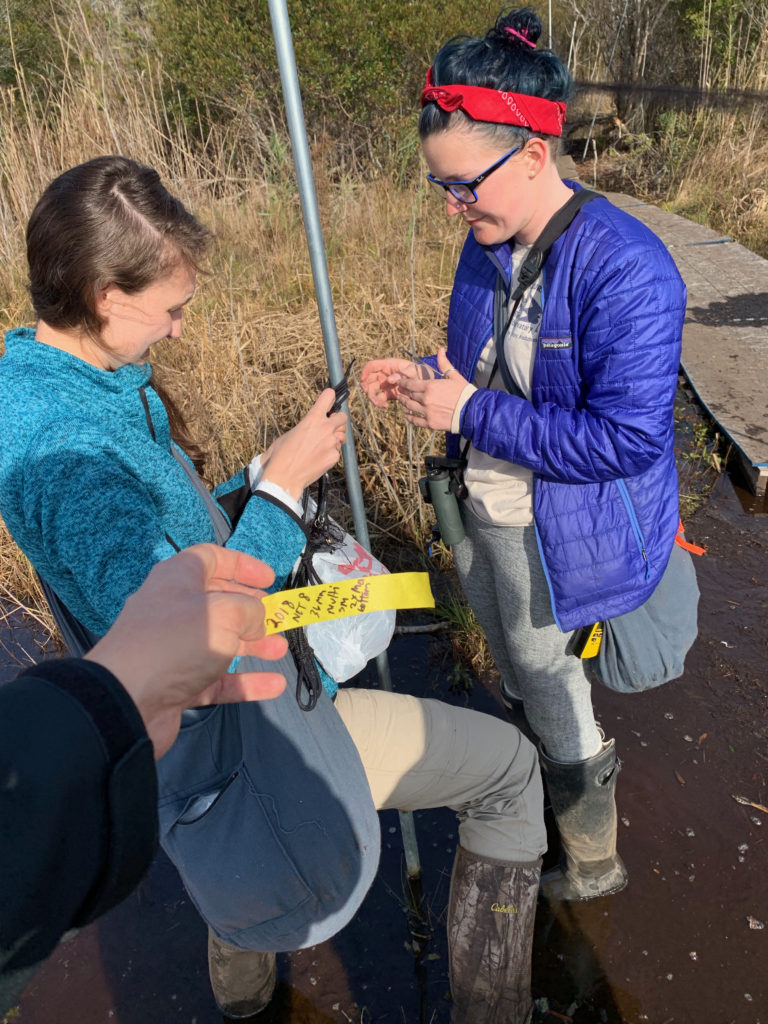
Breaking down the station. Marking the condition of each net, taking down the poles, net repair and storing equipment for next season. It may not be glamorous, but it’s important!
Stay tuned to this blog for upcoming posts as we continue to enter this season’s data and begin to look at any interesting overall trends.
Until then, fare thee well and thank you for joining us on this incredible journey, the first of the next hundred years!
Week 14 Stats:
| SPECIES | NEW | RECAPS | TOTALS |
| Wilson’s Snipe | 1 | 1 | |
| Carolina Chickadee | 1 | 1 | 1 |
| Tufted Titmouse | 1 | 1 | |
| Brown Creeper | 1 | 1 | |
| Golden-crowned Kinglet | 5 | 5 | |
| Ruby-crowned Kinglet | 1 | 1 | |
| Hermit Thrush | 1 | 1 | |
| American Robin | 1 | 1 | |
| Gray Catbird | 1 | 1 | |
| Song Sparrow | 2 | 2 | |
| Swamp Sparrow | 2 | 1 | 2 |
| White-throated Sparrow | 2 | 2 | |
| Orange-crowned Warbler | 1 | 1 | |
| Common Yellowthroat | 1 | 1 | |
| Blackpoll Warbler | 1 | 1 | |
| Yellow-rumped (Myrtle) Warbler | 13 | 3 | 13 |
| Northern Cardinal | 2 | 2 | |
| TOTALS | 37 | 5 | 42 |
Total species this season: 101
Total birds banded this season: 8,054




